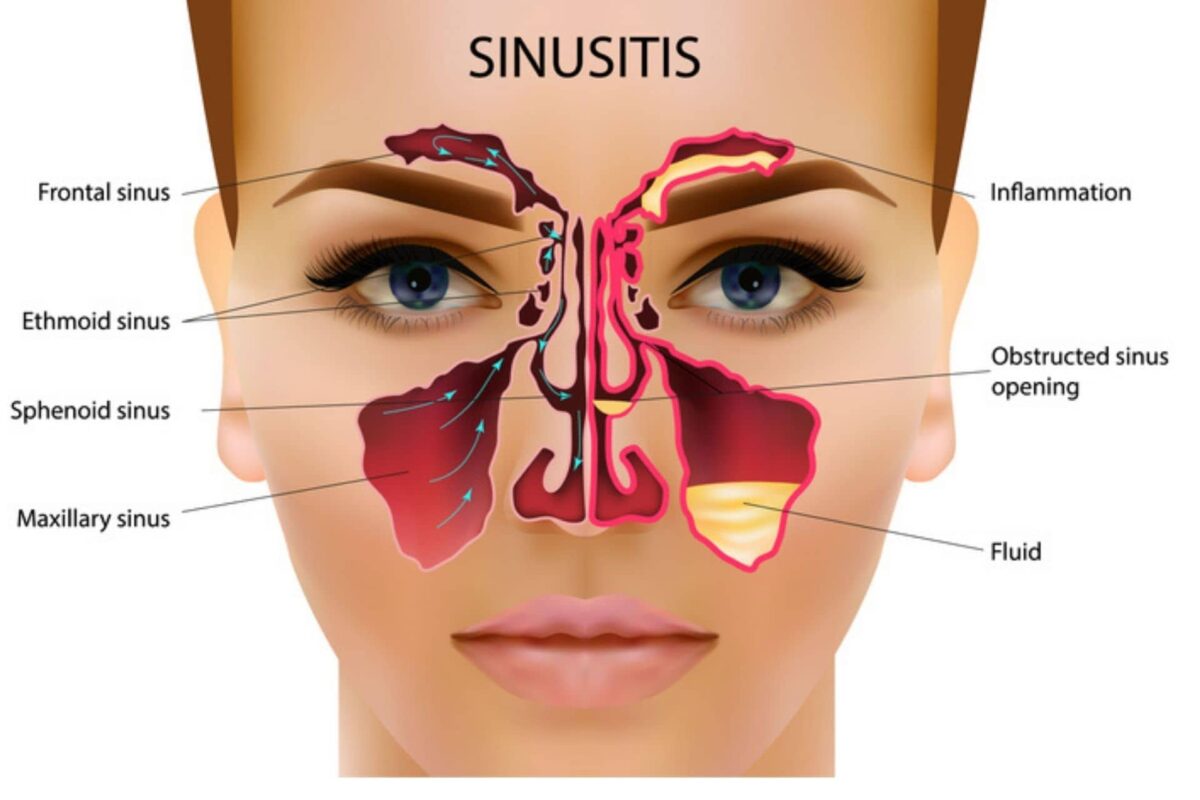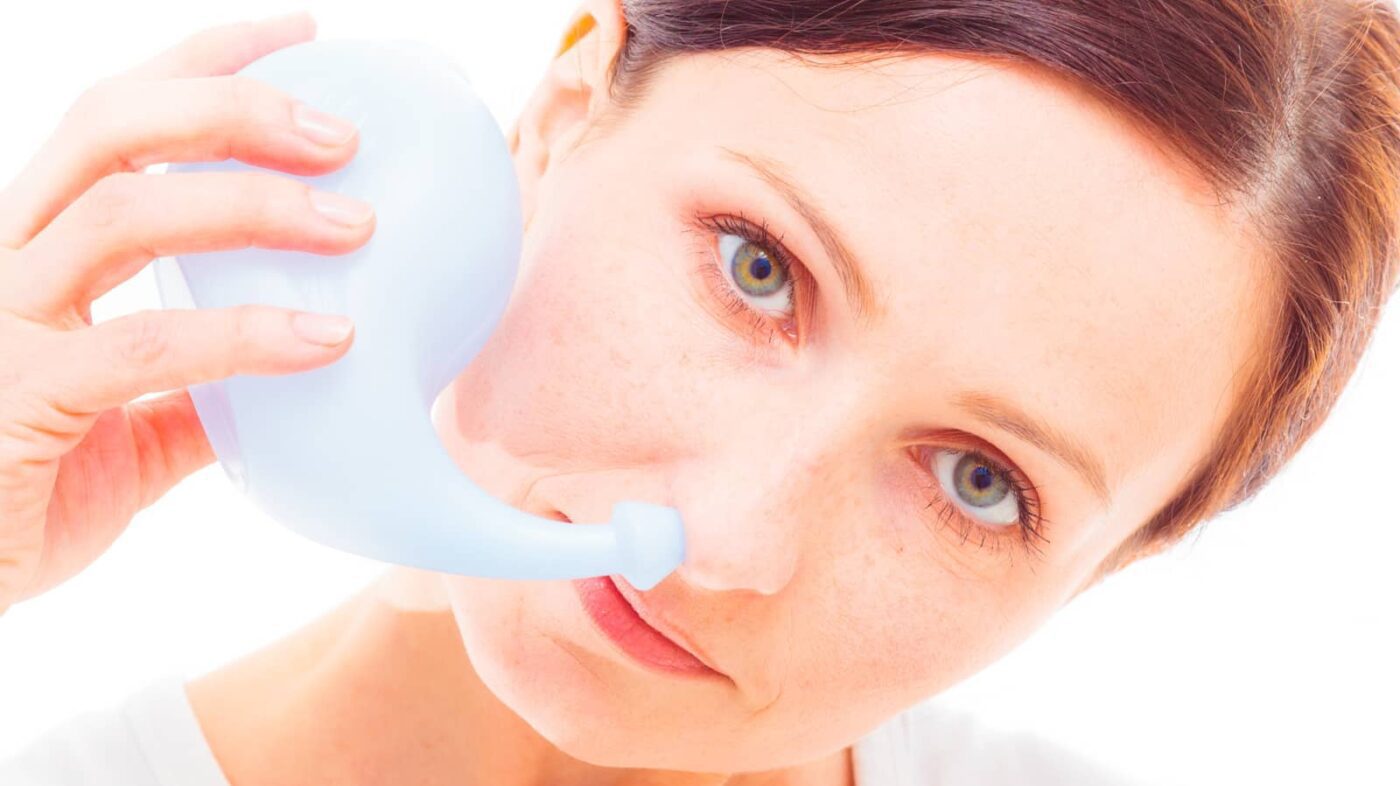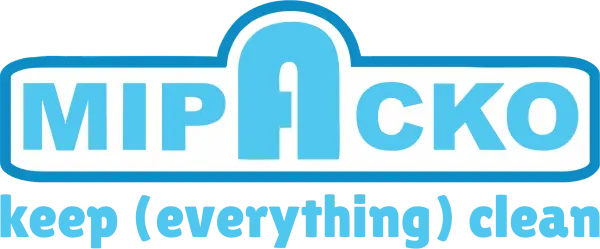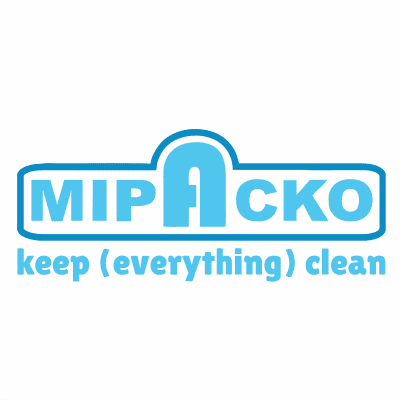Clean your Nose – The nose is a vital part of our respiratory system, playing a crucial role in filtering the air we breathe and providing us with a sense of smell. Properly cleaning and caring for our nose is essential for maintaining overall health and well-being. In this article, we will explore why it is important to clean your nose properly and the various benefits that come with practicing good nasal care.
1.1 Why Properly Clean Your Nose is Important
Properly cleaning your nose is essential for several reasons. Firstly, the nose acts as a natural air filter, capturing dust, allergens, and other particles present in the air we breathe. Over time, these particles can accumulate in the nasal passages, leading to congestion, sneezing, and discomfort. Regularly cleaning your nose helps to remove these impurities, promoting clearer breathing and reducing the risk of respiratory issues.
Secondly, clean your nose can help prevent the spread of infections. The nasal passages provide an entry point for viruses and bacteria, and when they are not adequately cleaned, these germs can linger and cause infections. By maintaining good nasal hygiene, you can reduce the chances of catching common colds, flu, and other respiratory illnesses.
Additionally, proper nasal care can alleviate allergy symptoms. Allergens such as pollen, dust mites, and pet dander can trigger allergic reactions when inhaled through the nose. Regular nasal cleaning can help remove these allergens, providing relief to individuals suffering from allergies.
1.2 Benefits of Proper Nasal Care
Engaging in proper nasal care offers a range of benefits for your overall health and well-being. Some of the key advantages include:
- Improved Breathing: By keeping your nasal passages clean and free of obstructions, you can enjoy improved airflow and easier breathing.
- Reduced Congestion: Nasal congestion can be uncomfortable and bothersome. Regular nasal cleaning can help alleviate congestion and promote a clear nasal passage.
- Better Sleep: Proper nasal care can lead to better sleep quality. When your nasal passages are clear, you are less likely to experience snoring and sleep disruptions caused by nasal congestion.
- Enhanced Sense of Smell: A clean and unobstructed nose allows you to fully enjoy the sense of smell, which is closely tied to the perception of taste and the enjoyment of food.
- Lower Risk of Infections: By removing germs and irritants from the nasal passages, you can reduce the risk of developing respiratory infections and related illnesses.
- Allergy Relief: Nasal cleaning can significantly reduce allergy symptoms, providing relief to individuals suffering from seasonal allergies or allergic rhinitis.
- Improved Sinus Health: Proper nasal care can help prevent sinus infections and improve overall sinus health.
Understanding Nasal Anatomy
The nose is a remarkable organ with complex structures and essential functions. To comprehend the significance of proper nasal cleaning, it is essential to grasp the anatomy and workings of this crucial part of our respiratory system.

2.1 Structure and Functions of the Nose
The nose is a prominent facial feature composed of bone, cartilage, and soft tissues. It consists of two nostrils (also called nares) separated by the nasal septum, a vertical wall that divides the nasal cavity into left and right sides. The upper part of the nose is made up of bone, while the lower part is supported by flexible cartilage.
Inside the nose, there are various essential structures that serve important functions:
- Nasal Cavity: The nasal cavity is a hollow space within the nose that extends from the nostrils to the back of the throat. It is lined with a specialized mucous membrane that produces mucus to trap particles and moisturize the air.
- Nasal Turbinates: These are bony structures that protrude into the nasal cavity. They play a crucial role in filtering and humidifying the air as it passes through the nose.
- Cilia: The nasal cavity is lined with tiny hair-like structures called cilia. Cilia help to sweep trapped particles and mucus towards the throat to be swallowed or expelled.
- Olfactory Receptors: Located high up in the nasal cavity, olfactory receptors detect odor molecules in the air and send signals to the brain, allowing us to perceive different scents.
2.2 The Process of Breathing and Air Filtration by the Nose
The process of breathing involves inhaling air through the nostrils, where it undergoes filtration, warming, and humidification before reaching the lungs. When we breathe in, the air passes through the nasal passages, where the following steps occur:
- Filtration: As air enters the nostrils, it comes into contact with the nasal turbinates and the mucous membrane, which act as filters. These structures trap dust, pollen, bacteria, and other particles present in the air.
- Warming: The nasal cavity is richly supplied with blood vessels. As the air flows through the narrow passages, it comes into contact with the warm blood, heating it up before it reaches the lungs.
- Humidification: The mucous membrane in the nasal cavity secretes mucus, which adds moisture to the inhaled air. This helps to prevent the delicate lung tissues from drying out.
- Olfaction: As the air passes over the olfactory receptors in the upper part of the nasal cavity, odor molecules bind to these receptors, allowing us to perceive smells.
Overall, the nose plays a critical role in filtering and conditioning the air we breathe, ensuring that it is clean, warm, and adequately humidified before it reaches the delicate lung tissues. Understanding the nasal anatomy and the air filtration process highlights the importance of maintaining proper nasal hygiene through regular cleaning and care. By keeping the nasal passages clean and free from obstructions, we can support optimal respiratory health and overall well-being.
Read more : Various Powerful Benefits of Exercise for Physical and Mental Health
Tools and Methods for Nasal Cleaning
Proper nasal cleaning involves the use of various tools and methods to effectively remove excess mucus, debris, and irritants from the nasal passages. Below are some commonly used tools and techniques for nasal cleaning:
3.1 Tissue or Cotton Swabs
One of the simplest methods for nasal cleaning is using a soft tissue or cotton swab. Gently blowing your nose and using a tissue to wipe away any discharge or mucus can provide immediate relief from congestion. However, it is essential to be gentle to avoid any irritation or injury to the nasal tissues.
3.2 Neti Pot or Nasal Rinse

A neti pot or nasal rinse is a popular method for nasal irrigation. It involves using a saline solution to flush out the nasal passages, effectively removing mucus, allergens, and irritants. To use a neti pot, follow these steps:
- Step 1: Prepare the saline solution by mixing distilled or sterilized water with non-iodized salt. The ratio should be about 1 teaspoon of salt per 2 cups of water.
- Step 2: Stand over a sink and tilt your head to one side.
- Step 3: Gently pour the saline solution into one nostril, allowing it to flow through the nasal passages and out the other nostril. Breathe through your mouth during this process.
- Step 4: Repeat the process on the other side by tilting your head in the opposite direction.
Using a neti pot or nasal rinse can help relieve nasal congestion, reduce inflammation, and promote sinus health. However, it is crucial to use distilled or sterilized water to prevent the risk of infection.
3.3 Nasal Aspirator or Suction Bulb
Nasal aspirators or suction bulbs are commonly used for infants and young children to clear their nasal passages. They work by creating a vacuum that sucks out mucus from the nose, providing relief from congestion. To use a nasal aspirator:
- Step 1: Squeeze the bulb to expel any air.
- Step 2: Gently insert the tip of the aspirator into the nostril.
- Step 3: Release the bulb slowly to create a vacuum that draws out the mucus.
- Step 4: Repeat the process on the other nostril.
Nasal aspirators are safe and effective when used correctly. They can help improve breathing and make it easier for young children to feed and sleep comfortably.
When performing nasal cleaning, it is essential to use clean and sanitized tools to prevent the risk of infection. If you are unsure about any nasal cleaning technique, consult with a healthcare professional, especially for infants, young children, or individuals with specific medical conditions. Proper nasal cleaning can provide relief from congestion, promote better breathing, and support overall respiratory health.
Is Rinsing Your Sinuses With Neti Pots Safe?
How to Clean Your Nose the Right Way

Proper nasal cleaning is essential for maintaining good nasal health and promoting clear breathing. Whether you’re dealing with nasal congestion due to allergies, a cold, or sinus issues, knowing how to clean your nose correctly can provide much-needed relief. In this article, we will explore various methods to clean your nose effectively and safely.
4.1 Preparing Before Cleaning Your Nose
Before you start clean your nose, it’s essential to prepare the tools and materials you’ll need. Make sure to wash your hands thoroughly with soap and water to prevent any potential contamination. Additionally, gather the necessary supplies, which may include tissues or cotton swabs, a neti pot or nasal rinse kit, and a nasal aspirator if you have infants or toddlers.
4.2 Steps for Clean Your Nose with Tissue or Cotton Swabs
One of the simplest methods for nasal cleaning is using a soft tissue or cotton swab. Begin by blowing your nose gently to remove any excess mucus. Then, take a clean tissue or a cotton swab and use it to wipe away any remaining discharge or mucus from your nostrils. Be gentle to avoid any irritation to the delicate nasal tissues.
4.3 Using Neti Pot or Nasal Rinse Safely and Effectively
A neti pot or nasal rinse is an effective way to clear your nasal passages and relieve congestion. To use a neti pot or nasal rinse safely and effectively, follow these steps:
- Step 1: Prepare the saline solution by mixing distilled or sterilized water with non-iodized salt. The ratio should be about 1 teaspoon of salt per 2 cups of water.
- Step 2: Stand over a sink and tilt your head to one side.
- Step 3: Gently pour the saline solution into one nostril, allowing it to flow through the nasal passages and out the other nostril. Breathe through your mouth during this process.
- Step 4: Repeat the process on the other side by tilting your head in the opposite direction.
Using a neti pot or nasal rinse can help flush out mucus, allergens, and irritants, promoting better breathing and sinus health. Ensure you use distilled or sterilized water to prevent the risk of infection.
4.4 Using Nasal Aspirator for Infants and Toddlers
For infants and young children who cannot blow their nose, a nasal aspirator can be a helpful tool to clear their nasal passages. To use a nasal aspirator:
- Step 1: Squeeze the bulb to expel any air.
- Step 2: Gently insert the tip of the aspirator into the child’s nostril.
- Step 3: Release the bulb slowly to create a vacuum that draws out the mucus.
- Step 4: Repeat the process on the other nostril.
Nasal aspirators are safe and can provide relief from nasal congestion for young children. Always use clean and sanitized nasal aspirators for hygiene purposes.
Special Considerations for Cleaning Children’s Noses
Children often experience nasal congestion and runny noses, especially during cold and flu seasons. As a parent or caregiver, it’s crucial to approach nasal cleaning for children with a gentle and cautious manner. Here are some special considerations to keep in mind when cleaning children’s noses:
5.1 A Gentler Approach for Children
When cleaning a child’s nose, it’s essential to use a gentler approach compared to adults. Children’s nasal passages are smaller and more sensitive, so excessive force or aggressive cleaning can cause discomfort and irritation. Opt for softer materials such as soft tissues or baby-sized cotton swabs to clean their noses gently. Be patient and understanding during the process, as children may not always cooperate or feel comfortable with nasal cleaning.
For infants and toddlers, using a nasal aspirator can be effective in relieving nasal congestion. As mentioned earlier, make sure to use a clean and sanitized nasal aspirator specifically designed for infants.
5.2 Importance of Teaching Children About Nasal Hygiene
Teaching children about the importance of nasal hygiene from an early age can instill good habits that will benefit them throughout their lives. Explain to them in a simple and age-appropriate manner why cleaning their noses is essential. Help them understand that it can help them breathe better, prevent discomfort, and reduce the risk of infections.
Demonstrate how to use tissues or cotton swabs properly for older children, and supervise their nasal cleaning routine until they are capable of doing it on their own. Encourage them to blow their noses gently when needed and dispose of used tissues properly to maintain hygiene.
Moreover, if your child is using a nasal rinse or neti pot, always assist them during the process to ensure they are doing it correctly and safely. Make it a positive and educational experience, emphasizing the benefits of proper nasal hygiene.
Tips for Proper Nasal Care
Proper nasal care is essential for maintaining optimal nasal health and preventing discomfort and infections. Here are some valuable tips to help you establish a successful nasal care routine:
6.1 Establishing a Regular Nose Cleaning Routine for Optimal Health
Incorporate nasal cleaning into your daily hygiene routine to keep your nasal passages clear and healthy. Depending on your needs and preferences, you can clean your nose once or twice a day. For individuals with allergies or frequent nasal congestion, cleaning the nose in the morning and before bedtime can be particularly beneficial.
Choose a nasal cleaning method that suits you best, such as using tissues, cotton swabs, a neti pot, or a nasal rinse. Consistency is key to reap the full benefits of nasal care, so make it a habit to clean your nose regularly.
6.2 Avoiding Common Mistakes in Nasal Cleaning
While nasal cleaning is a simple and safe process, there are some common mistakes to avoid to ensure effectiveness and prevent any negative effects. Here are a few things to keep in mind:
- Avoid using excessive force when blowing your nose or inserting objects into your nasal passages. Be gentle to prevent irritation and damage.
- Use clean and sanitized nasal cleaning tools to reduce the risk of infections. Replace tissues or cotton swabs with fresh ones for each use.
- If you are using a nasal rinse or neti pot, always follow the manufacturer’s instructions for proper use and cleaning.
6.3 Consulting with Healthcare Professionals When Needed
If you experience chronic nasal congestion, frequent nosebleeds, or other persistent nasal issues, it’s essential to consult with a healthcare professional. They can help identify the underlying cause of your symptoms and recommend appropriate treatments or interventions.
Furthermore, if you have any medical conditions or allergies, consult with your doctor before starting a new nasal care routine. They can provide personalized advice and ensure that the chosen cleaning method is safe and suitable for your specific needs.
Conclusion
7.1 The Importance of Proper Nasal Care
Proper nasal care is crucial for maintaining overall health and well-being. The nose plays a vital role in our respiratory system by filtering and humidifying the air we breathe. Keeping the nasal passages clean and clear helps prevent the buildup of dirt, dust, allergens, and harmful microorganisms, reducing the risk of infections and allergies. Additionally, proper nasal care can alleviate nasal congestion, improve breathing, and enhance our sense of smell.
7.2 Implementing Effective Nasal Care for Better Health
To ensure effective nasal care, it is essential to understand the anatomy of the nose and the various methods available for cleaning. Choose a nasal cleaning method that suits your needs and preferences, whether it’s using tissues, cotton swabs, a neti pot, or a nasal rinse. Establishing a regular nose cleaning routine is key to reaping the full benefits of nasal care.
When cleaning your nose, be gentle to avoid irritation and damage to the delicate nasal tissues. Use clean and sanitized tools to reduce the risk of infections. If you are using a nasal rinse or neti pot, always follow the manufacturer’s instructions for proper use and cleaning.
Furthermore, it’s crucial to avoid common mistakes in nasal cleaning, such as using excessive force or inserting objects too far into the nasal passages. By being mindful of these aspects, you can ensure the effectiveness and safety of your nasal care routine.
In conclusion, taking care of our nose is an essential aspect of maintaining overall health. By implementing proper nasal care techniques, we can keep our nasal passages clean, clear, and healthy, allowing us to breathe more comfortably and enjoy an improved sense of well-being. Remember, if you have any persistent nasal issues or concerns, don’t hesitate to seek advice from healthcare professionals for personalized guidance and support. With proper nasal care, we can optimize our respiratory health and lead a more comfortable and fulfilling life.
Read More : How to Clean Your Ears Properly





